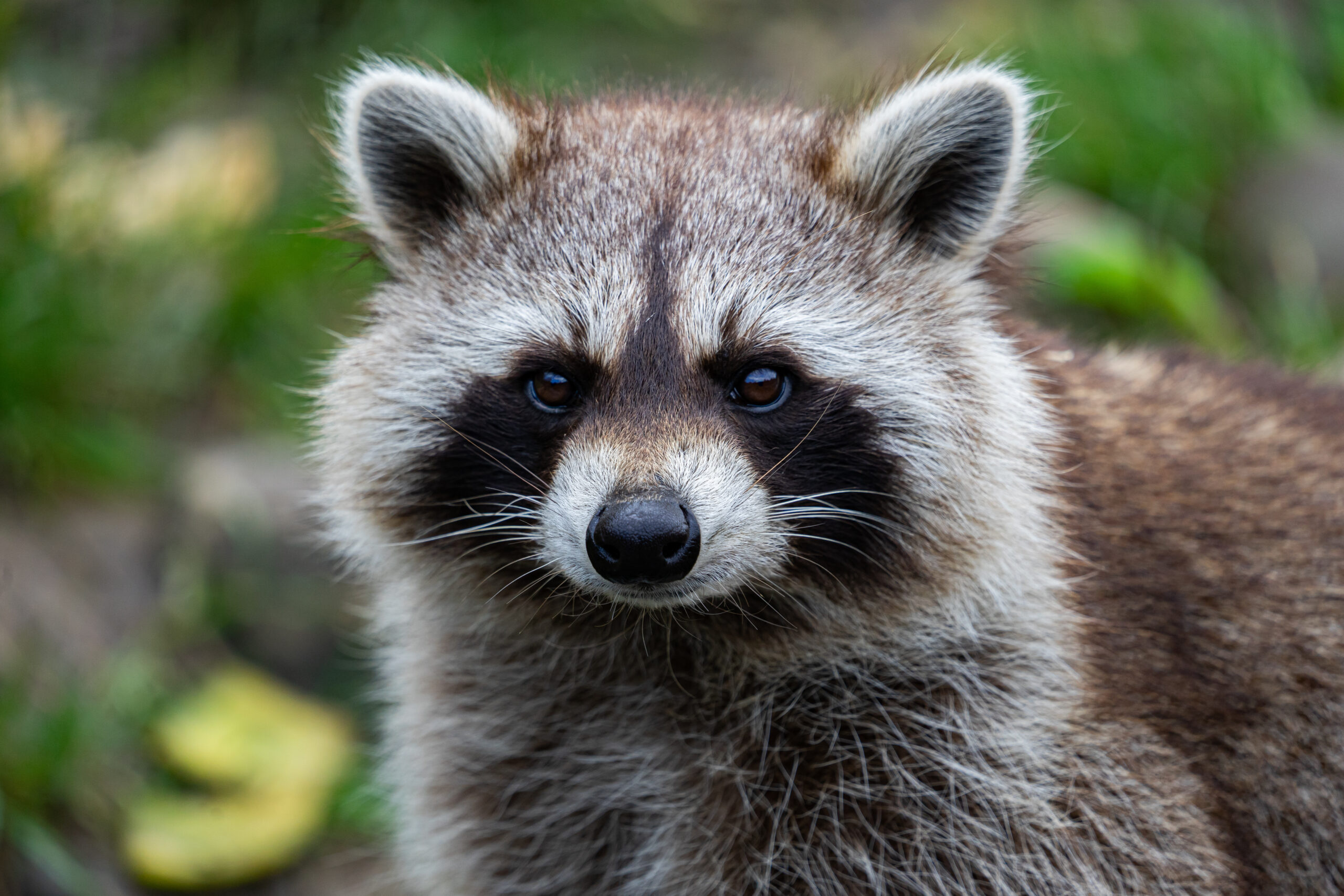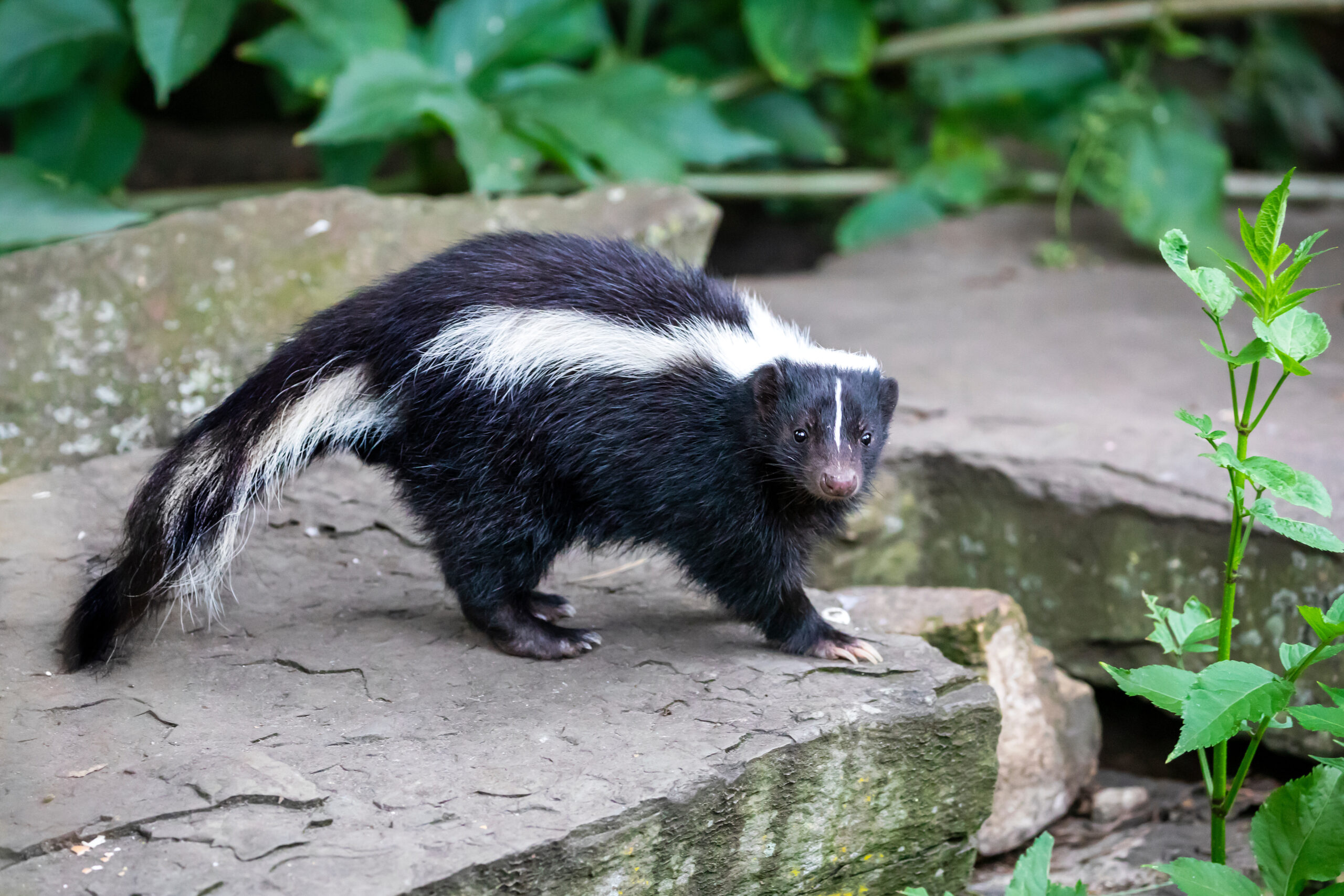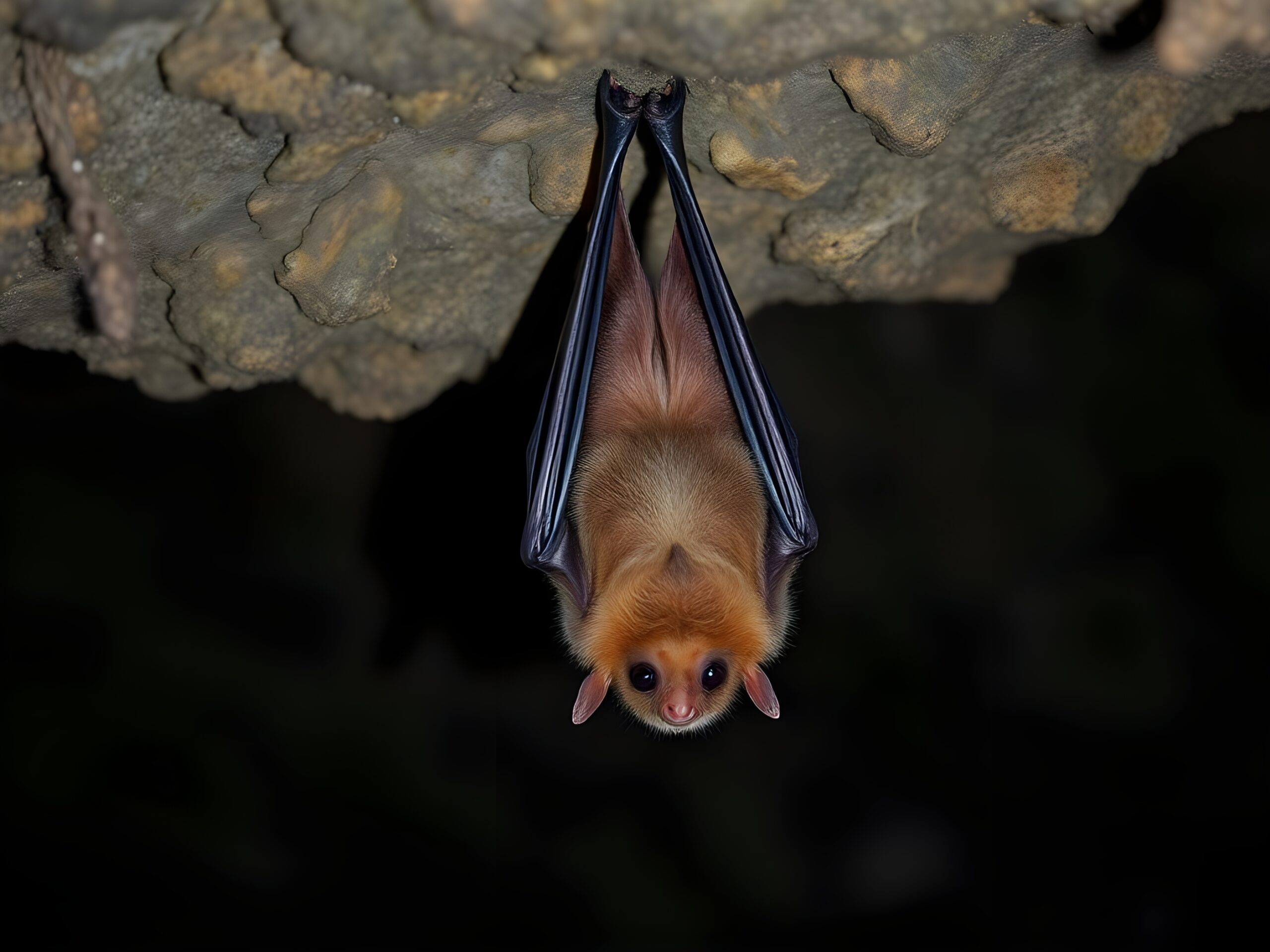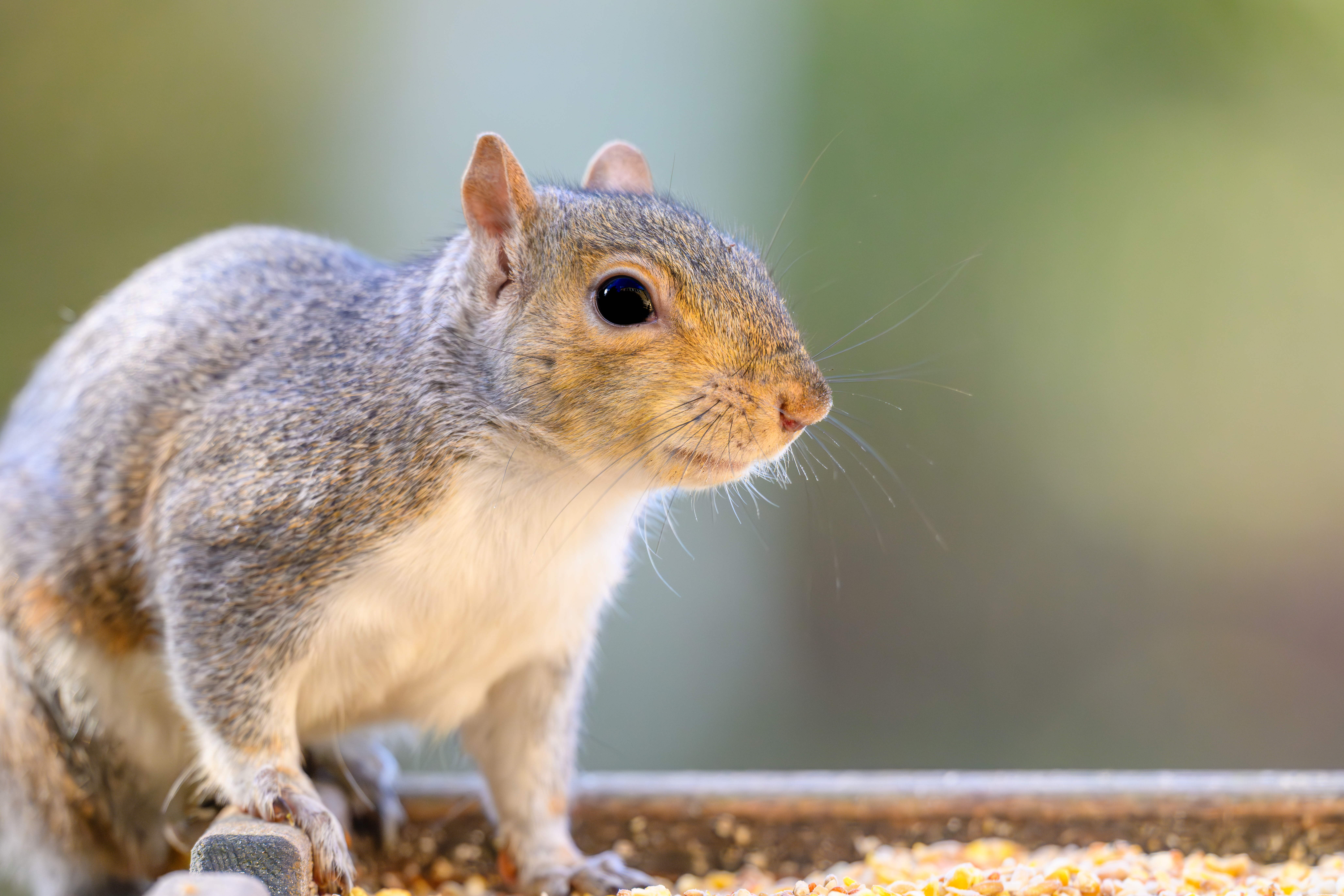Wildlife control & removal, Raccoon, Skunk, Bat, Squirrel removal
Bugs aren’t the only creatures that can be detrimental to humans—animals can be pests, too. If not controlled properly, an animal pest can have a significant impact on your family’s home, health, and safety. Animals most commonly classified as wildlife pests are raccoons and skunks, as well as bats and squirrels.
Raccoon
 Raccoons may be cute, curious creatures that look like bandits, but they can also be dangerous when they come into contact with people and pets. Prolific in Ontario and the GTA, raccoons have greyish-brown fur with black markings. They are most easily identified by the black mask on their face and a bushy tail with four to six black rings.
Raccoons may be cute, curious creatures that look like bandits, but they can also be dangerous when they come into contact with people and pets. Prolific in Ontario and the GTA, raccoons have greyish-brown fur with black markings. They are most easily identified by the black mask on their face and a bushy tail with four to six black rings.
Found in rural and urban areas across Ontario, raccoons are well adapted to living with people. Which is part of the problem; while all warm-blooded mammals can carry the rabies virus, raccoons are major carriers.
A raccoon’s diet consists of grubs, insects, rodents and other small animals, eggs, fleshy fruits, nuts, and vegetables. They’re not exactly picky eaters! Because of their amazing dexterity, raccoons can also remove the lids off garbage cans and compost bins. Once raccoons find a free, abundant food source, they will return over and over again.
Having adapted to life among people, it should be no surprise to learn that these mammals have no problem finding habitation around humans. Mainly active at night, raccoon den sites include hollow trees, groundhog dens, chimneys, garages, under and inside sheds, attics, porches, and under decks.
In Ontario, raccoons breed from January to April. The gestation period is eight weeks and litter sizes average three to five cubs. The cubs may stay with the mother over the winter. While captive raccoons have been known to live over 20 years; in the wild, their, life expectancy is only 1.8 to 3.1 years.
Because of a raccoon’s strength and unpredictability and the threat of rabies, it is not wise for homeowners to attempt their removal.2
Skunk
 A skunk is more than odorous; it can also be a nuisance. Due to its distinctive stripe, people instinctively know to stay away—animals, not so much. Skunks can vary in colour from cream to brown or grey, although the most common fur colour is black. The animal’s most distinctive feature is the white stripe that runs down its back and tail. A skunk will weigh approximately 3.5 kg (eight pounds) and can grow to 29 cm (one foot) in length.
A skunk is more than odorous; it can also be a nuisance. Due to its distinctive stripe, people instinctively know to stay away—animals, not so much. Skunks can vary in colour from cream to brown or grey, although the most common fur colour is black. The animal’s most distinctive feature is the white stripe that runs down its back and tail. A skunk will weigh approximately 3.5 kg (eight pounds) and can grow to 29 cm (one foot) in length.
Best known for its defensive attack, a skunk can spray its pungent odour up to 15 feet, using glands located below the tail. The spray can even burn an attacker’s eyes, causing temporary blindness.
As an omnivore, a skunk will eat almost anything, including insects and larvae, earthworms, small rodents, lizards, salamanders, frogs, snakes, birds, moles, and eggs. It will also eat berries, roots, leaves, grasses, fungi, and nuts. In rural areas, skunks also enjoy human garbage.
Skunks are not very adept at climbing; as a result, they are attracted to low spaces under porches, sheds, piles of wood, rocks, or debris. Twilight animals, skunks are known for their excellent sense of smell and poor vision, and have been known to walk up to people standing still.
Skunks typically mate in early spring and may birth four to seven kits per year. They have a gestation period of about nine weeks and females are extremely protective; spraying any pets or humans that appear to pose a threat. The kits are usually weaned after two months, but stay with their mother until they are ready to mate at about one year of age.
Bats
 During the warm summer months, just as the sun is setting, Torontonians can see thousands of furry, flying mammals take to the skies. Able to eat three times their body weight in insects every night, bats may very well be the best pest controllers on the planet— but because they can also carry diseases, like rabies, and squeeze through openings the size of a dime, they can also be a property owner’s biggest concern.
During the warm summer months, just as the sun is setting, Torontonians can see thousands of furry, flying mammals take to the skies. Able to eat three times their body weight in insects every night, bats may very well be the best pest controllers on the planet— but because they can also carry diseases, like rabies, and squeeze through openings the size of a dime, they can also be a property owner’s biggest concern.
GET A FREE QUOTE TO REMOVE YOUR BAT PROBLEM
There are eight different species of bats in Ontario: big brown, little brown, eastern pipistrelle, silver-haired, hoary, red, small-footed, and northern long-eared. The two most common bats in Toronto are the big brown bat and the little brown bat.
Not surprisingly, of the different species of bats, only two typically roost in people’s houses: the big brown bat and the little brown bat. While less than one percent of bats ever contract rabies, in Ontario, 95% of rabies-positive bats are big brown bats.
The big brown bat may sound large, but it’s actually quite small, with an average weight of only 20 g and a wingspan of 30 cm. An adept eater, the big brown bat has 32 sharp teeth that can crunch through a beetle’s hard shell, making eating larger bugs such as moths, flies, wasps, and dragonflies a breeze.
The big brown bat eats until it’s full, and then spends the rest of the time digesting its meal under eaves or a porch, where it’s safe from predators. Before dawn, it will return to its day roosts in the walls or eaves of buildings.
Well adapted to civilization, the big brown bat has no issue hibernating in colonies over the winter months in houses and roosting in homes over the summer.
Unlike other rabies carriers, bats are small and can bite a person without them even knowing it. Also, because bats can transmit rabies to domestic pets, it’s important to make sure your pet’s vaccination shots are up-to-date.
The more aptly named little brown bat weighs between five and 14 g (the weight of two quarters). When in flight, the little brown bat looks a lot larger, thanks to its 25-cm wingspan. Agile in flight, the little brown bat flies at an average speed of 20 km/h, but can fly as fast as 35 km/h.
Like its larger big brown bat peer, the little brown bat first surfaces at dusk, feeding during the first two to three hours after sunset. It dines on free-flying insects such as midges, beetles, moths, and occasionally mosquitoes.
Bats do not chew their way into attics or other crevices; they are opportunists that get in through pre-existing gaps and holes. While bats rarely bite people unless they are picked up or need to defend themselves, bats flying around an attic or in the home have a better chance at coming into contact with people.
They can also pose a serious health hazard if they decide to use an attic or other area of a home or building for roosting or a nursery colony. Bats may be fastidiously clean, but it doesn’t take long for their droppings to accumulate, which attracts bugs.
The build-up of droppings produced by an established colony of bats also increases the possibility of contracting a lung disease called histoplasmosis.
Because bats are nocturnal and quiet animals, they can go undetected in attics for years before the odour from droppings builds up.
Despite their size, bats reproduce very slowly. Most species actually produce only one offspring per year. In the Greater Toronto Area, bats are born in June or July and learn to fly within two to five weeks. If you think your home is harbouring bats, seek expert advice.
When it comes to removing bats, it’s best to call a professional company like City & Country Pest Control. City & Country Pest Control will arrive at your home, conduct a thorough inspection, and provide you with a free detailed estimate.
During the non-birthing season, City and Country Pest Control will install a one-way door that allows the bats to exit through the door, but not return. During the bats’ June and July baby season, a one-way door will not be installed, as this would separate the mother bat from its babies, causing them to starve and die in the attic.
In this instance, City & Country Pest Control waits until August to rid a property of bats. Waiting until the bats are old enough to fly ensures they can exit through the one-way door.
Ridding your home or property of bats is only half the job; going forward, it’s all about prevention. The key to solving any future bat problems lies in being proactive, such as caulking the perimeter and sealing every potential gap. Equally important is the screening of vents, proper chimney caps, plumbing mats, etc.
Squirrels
 Ontario is home to several species of squirrel, including eastern grey squirrels, red squirrels, northern and southern flying squirrels, and eastern chipmunks. One of the most commonly found squirrels in the Greater Toronto Area (GTA) is the eastern grey squirrel. While this type of squirrel is usually grey, in urban areas, it has fewer predators and is often black—which leads people to think these are two different species.
Ontario is home to several species of squirrel, including eastern grey squirrels, red squirrels, northern and southern flying squirrels, and eastern chipmunks. One of the most commonly found squirrels in the Greater Toronto Area (GTA) is the eastern grey squirrel. While this type of squirrel is usually grey, in urban areas, it has fewer predators and is often black—which leads people to think these are two different species.
As the largest tree squirrel found in eastern Canada, the grey squirrel spends most of its life in trees; except when it comes down to feeding or storing food. In the urban settings, squirrels have been known to live up to 20 years. Squirrels that live in rural setting have a much shorter lifespan—just three to six years.
The eastern grey squirrel is identifiable by its dark-to-pale grey back. The squirrel’s fur is thick and long in the winter, and can change colour with the seasons. The black variation of the eastern grey squirrel tends to be glossy.
The most notable feature of the eastern grey squirrel is its large, bushy tail, which acts as a rudder when it jumps from high perches. The tail can indicate the squirrel’s mood and be used to distract predators.
While squirrels found running around the GTA foraging for food can be extremely cute, they can also cause serious damage to residential and commercial properties.
Squirrels have the same basic needs as we do: food, water, and shelter. Squirrels often come into contact with people (and bird feeders, gardens, trees, etc.) when they are searching for food: acorns, walnuts, sunflower seeds, corn, flowers, and millet. Squirrels also come into contact with people when they are looking for somewhere to build a nest (attics, chimneys, eavestroughs, and buildings).
The eastern grey squirrel has two breeding seasons: the first litter is born in February or March and the second in June and July; with each period lasting for about three weeks. It is during these mating periods that squirrels actively make their way into homes and attics as they search out warm, dry shelter where they can nest and raise their young.
A home or building’s structure can also be compromised if rain and snow comes in through entry holes. Once inside, squirrels can cause major damage to siding, insulation, and electric wiring.
Because a squirrel can produce a litter of two to five young up to twice a year, a squirrel community in your home can develop very quickly. And, like most wild animals, a female squirrel will defend her young if she feels threatened.
Thanks to a steady supply of food and shelter and having few natural predators, squirrels have adapted amazingly well to urban life in the GTA. That said, conflict with squirrels can be prevented if we are willing to make certain changes.
When it comes to removing squirrels, it’s best to call a professional company like City & Country Pest Control. City & Country Pest Control will arrive at your home, conduct a thorough inspection, and provide you with a free, detailed estimate.
City & County Pest Control will humanely remove the mother and her litter, repair any damage, and animal-proof roof vents, plumbing, roof mats/pipes, chimney caps, etc. City & Country Pest Control uses quality materials to ensure the squirrel does not reinvade your home.
Sources
- “Hantavirus,” Centers for Disease Control and Prevention; http://www.cdc.gov/hantavirus/index.html, last accessed August 17, 2016.
- “Wildlife in the City: Raccoons,” City of Toronto web site; http://www1.toronto.ca/wps/portal/contentonly?vgnextoid=f1fc83cf89870410VgnVCM10000071d60f89RCRD&vgnextchannel=a5737729050f0410VgnVCM10000071d60f89RCRD, last accessed August 10, 2016.
- “Wildlife in the City: Skunks,” City of Toronto web site; http://www1.toronto.ca/wps/portal/contentonly?vgnextoid=56fc83cf89870410VgnVCM10000071d60f89RCRD&vgnextchannel=a5737729050f0410VgnVCM10000071d60f89RCRD, last accessed August 10, 2016.
- High Park Nature Centre, “Bats of High Park,” High Park Nature, April 1, 2013; http://www.highparknature.org/wiki/wiki.php?n=Mammals.Bats; last accessed August 17, 2016.
- Hamilton, H., “Eastern Grey Squirrel,” Hinterland Who’s Who, 1990; http://www.hww.ca/en/wildlife/mammals/eastern-grey-squirrel.html, last accessed August 17, 2016.
- City of Toronto, “Wildlife in the City: Squirrels,” Toronto.ca; http://www1.toronto.ca/wps/portal/contentonly?vgnextoid=c20d83cf89870410VgnVCM10000071d60f89RCRD&vgnextchannel=a5737729050f0410VgnVCM10000071d60f89RCRD, August 17, 2016,


